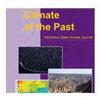Glacial AMOC shoaling despite vigorous tidal dissipation: vertical stratification matters
IF 3.2
2区 地球科学
Q1 GEOSCIENCES, MULTIDISCIPLINARY
引用次数: 0
Abstract
Abstract. During the Last Glacial Maximum (LGM), tidal dissipation was about 3-fold higher than today, which could have led to a considerable increase in vertical mixing. This increase might have enhanced the glacial Atlantic Meridional Overturning Circulation (AMOC), contradicting the shoaled AMOC indicated by paleoproxies. Here, we conduct ocean model simulations to investigate the impact of background climate conditions and tidal mixing on the AMOC during the LGM. We successfully reproduce the stratified ocean characteristics of the LGM by accurately simulating the elevated salinity of the deep sea and the rapid temperature decrease in the ocean's upper layers. Our findings indicate that the shoaled glacial AMOC is mainly due to strong glacial-ocean stratification, regardless of enhanced tidal dissipation. However, glacial tidal dissipation plays a critical role in the intensification of Antarctic Bottom Water (AABW) during the LGM. Given the critical role of the AMOC in (de-)glacial climate evolution, our results highlight the complex interactions of ocean stratification and tidal dissipation that have been neglected so far.尽管潮汐强烈消散,但冰川期 AMOC 仍在淤积:垂直分层很重要
摘要在末次冰川极盛时期(LGM),潮汐消散比现在高出约3倍,这可能导致垂直混合的显著增加。这种增加可能增强了冰川时期的大西洋经向翻转环流(AMOC),这与古近代资料显示的大西洋经向翻转环流受阻相矛盾。在此,我们进行了海洋模式模拟,以研究大洪水时期背景气候条件和潮汐混合对大西洋经向翻转环流的影响。我们通过精确模拟深海盐度升高和海洋上层温度快速下降,成功地再现了远古时期的分层海洋特征。我们的研究结果表明,冰川AMOC的浅滩化主要是由于强烈的冰川海洋分层造成的,与潮汐消散增强无关。然而,冰川潮汐消散在远古时期南极底层水(AABW)的强化中起着关键作用。鉴于AMOC在(去)冰川气候演变中的关键作用,我们的研究结果凸显了迄今为止被忽视的海洋分层与潮汐消散的复杂相互作用。
本文章由计算机程序翻译,如有差异,请以英文原文为准。
求助全文
约1分钟内获得全文
求助全文
来源期刊

Climate of The Past
地学-气象与大气科学
CiteScore
7.40
自引率
14.00%
发文量
120
审稿时长
4-8 weeks
期刊介绍:
Climate of the Past (CP) is a not-for-profit international scientific journal dedicated to the publication and discussion of research articles, short communications, and review papers on the climate history of the Earth. CP covers all temporal scales of climate change and variability, from geological time through to multidecadal studies of the last century. Studies focusing mainly on present and future climate are not within scope.
The main subject areas are the following:
reconstructions of past climate based on instrumental and historical data as well as proxy data from marine and terrestrial (including ice) archives;
development and validation of new proxies, improvements of the precision and accuracy of proxy data;
theoretical and empirical studies of processes in and feedback mechanisms between all climate system components in relation to past climate change on all space scales and timescales;
simulation of past climate and model-based interpretation of palaeoclimate data for a better understanding of present and future climate variability and climate change.
 求助内容:
求助内容: 应助结果提醒方式:
应助结果提醒方式:


